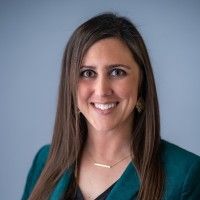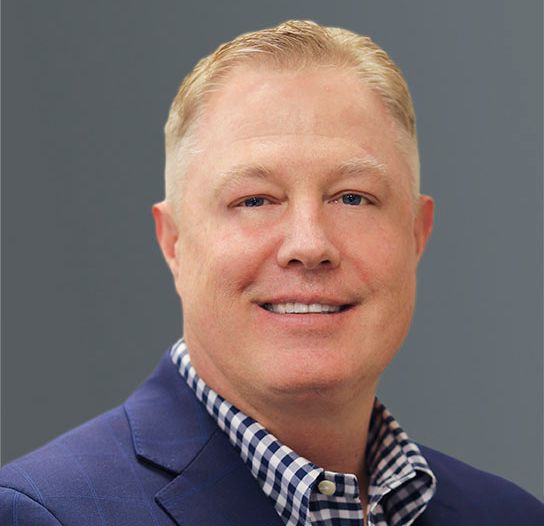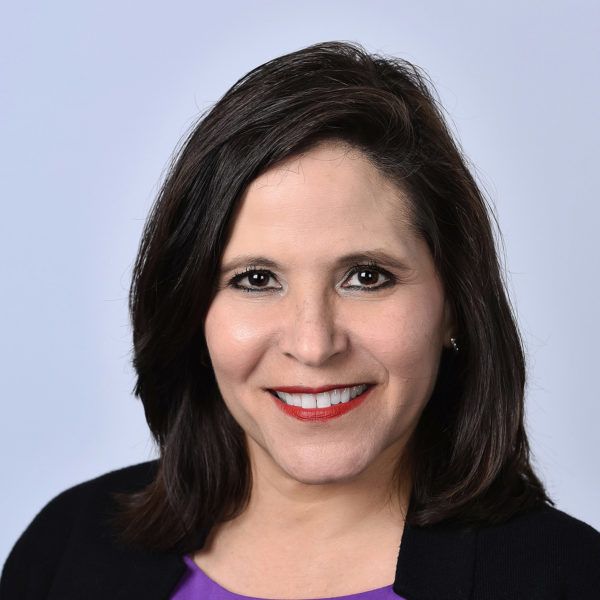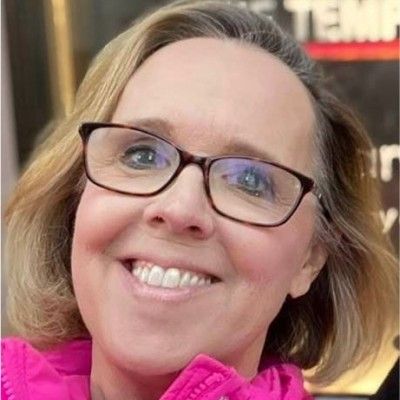- Center on Health Equity and Access
- Clinical
- Health Care Cost
- Health Care Delivery
- Insurance
- Policy
- Technology
- Value-Based Care
Galvanizing Community Oncology Through Advocacy, Empowerment, and Stewardship
Coverage from the Community Oncology Alliance Community Oncology Conference, held April 4-5, 2024, in Orlando, Florida.
Reflecting the 2024 Community Oncology Conference theme of “Stronger Together,” a panel discussion to conclude day 1 of this year’s meeting in Orlando, Florida, explored how effective advocacy among physicians, administrators, legislators, and patients through the building of long-term relationships and establishing personal connections galvanizes progress within community oncology, both in person and virtually.
Emily Touloukian, DO | Image credit: COA

Joining conference cochair Emily Touloukian, DO, medical oncologist/hematologist and president/managing partner of Coastal Cancer Center in Myrtle Beach, South Carolina, for “Stronger Together: The Power of Advocacy to Support Patients & Practices”1 were Rose Gerber, MS, 20-year cancer survivor and director of patient advocacy for the Community Oncology Alliance (COA); Neil Foley, senior vice president of government and sales at New York Cancer & Blood Specialists (NYCBS); and Mary Caffrey, executive editor of Evidence-Based Oncology.
“At COA, our mission is that we’re dedicated to advocating for community oncology patients and practices,” Touloukian emphasized. “Typically, this has been done at the national and federal levels.”
She kicked off the discussion by asking the panelists to differentiate between federal and state legislation and advocacy and asking them to describe the importance of advocacy at the state level. The panelists agreed that principal keys to successful advocacy are building trusted relationships over time and having patience.
“You must realize that unlike members of Congress, where that’s their full-time job, state legislators typically have more than 1 job. They are balancing their state’s goals plus whatever their regular job is, so they are really pressed for time,” Caffrey, who previously covered the New Jersey Legislature as a reporter and later served as a state and local government official, explained.
“Be conscious of how [legislators] want to spend their time and that they often have a lot of competing interests,” she said. “If they can’t give you everything you want, don’t go crazy. Look to building that relationship for the long haul.”
Neil Foley | Image credit: NYCBS

Foley concurred. Having served as town councilman in Brookhaven, New York, for the fifth district for the past 9 years and now serving as deputy supervisor for the town, he is able to provide viewpoints on 2 fronts: as a legislator and outsider to the oncology field and an insider through his position at NYCBS, highlighting the vital role of education in building and fortifying a mutually beneficial advocacy relationship.
“Elected officials have no idea how the oncology world actually works. They understand because cancer touches all our lives, but they don’t understand treatments or medications,” he said. “Our role is to educate our friends in Albany, [New York], and Washington, DC. You have to have a seat at the table; you have to have a voice.”
Having a literal seat is how Gerber explained that the COA Patient Advocacy Network incorporates experiences of patients with cancer to educate members of Congress and their representatives through its Sit in My Chair advocacy program. During these encounters, lawmakers are put through a mock cancer appointment, meet with community oncologists, listen and learn from patient advocates on community oncology’s value, and hear about COA’s policy priorities.2
Rose Gerber, MS | Image credit: COA

“Because unless that member of Congress has had cancer or has a family member who’s had cancer, they really do not understand the complexities involved in taking care of patients with cancer,” Gerber said. “Through the Sit in My Chair program, we are introducing to them what it feels like to be a patient with cancer.”
Some of the photos from these experiences have proven so realistic that Gerber noted she has received messages saying people did not know their member of Congress had cancer.
Circling back to the importance of understanding state vs federal issues and effective ways to bring your priorities to legislators’ attention, Caffrey reiterated the importance of starting small. For example, don’t bring issues to your state legislator that only CMS can resolve. This is a waste of their time and not appropriate, she emphasized.
“State legislators really do want to try and solve your problem, and they really do want to come away with a win,” she said. “So if you can bring to them 1 to 3 things and not a whole list, it’s really going to be a win-win for everyone.”
Touloukian continued the discussion by asking each panelist to expound on the importance of in-person advocacy vs virtual advocacy, using experience during the COVID-19 pandemic as a case study. The change in how to effectively advocate and spur positive change was hard to digest, Gerber explained, because of the need to encourage people to stay involved. The experience did have its pluses, in that COA was able to pivot to virtual events and participants enjoyed forgetting about the pandemic for a spell; however, the great thing about in-person advocacy, she reiterated, is the building of those relationships and establishing those in-person connections.
“It’s a completely different experience when I get to see that person,” she stated. “So even though you can do a virtual event and it’s important to have that advantage to advocating, you have to recognize that there are some challenges in doing so.”
Foley and Caffrey echoed her sentiments. He noted that all NYCBS meetings are in person—including several yearly trips to Washington, DC, with Jeff Vacirca, MD, FACP, CEO of NYCBS, and David Eagle, MD, chair of legislative affairs and patient advocacy at NYCBS and a former COA president. Caffrey said that level of visibility does make a difference. The legislators see that you are making this trip to see them and you are making that effort, so they will make an effort to see you. Even if the visit is an invitation for elected officials to tour a cancer care facility or new medical offices, they are seeing what you do, and that can be very powerful, Foley and Caffrey concurred.
“It’s really impactful to be able to talk about these issues, even if they’re not oncology issues,” Touloukian added. “You can clarify issues for the representatives and form those long-term relationships, which can prove invaluable down the line.”
Practical advice was next on the agenda, with Touloukian delivering this prompt: “How would you all recommend that you structure a meeting with legislators so that it can be impactful and successful?” There was no shortage of practical tips from the panelists.
“Remember that a majority of the time, staff members are younger than us. Usually younger than 30 [years],” Foley noted. “But they are the eyes and ears and voices of elected officials.” With meetings that frequently only last 20 minutes and sometimes take place in a hallway outside their office, he advises keeping notes and memos short, with 2 to 3 points at most. Show that although you need their support on these important issues, you also respect their time, he emphasized.
Bios are important as are professional profiles, Caffrey contributed.
Mary Caffrey | Image credit: LinkedIn

“Keep in mind that when you go to meet with legislators, if you have bios on them, they are likely making bios on you as well,” she said. “Keep your LinkedIn profile up to date, especially your photo. If these meetings are going to be a regular thing, these little details do matter.” Details include having a small ask to balance the sting of a big ask, because if your legislator has to say no to your bigger agenda item, that may make it easier for them to say yes to your smaller request, “to something that is kind of easy.”
Gerber remarked that it’s vital to remember what is being asked during these meetings and to ensure that these meetings have a specific agenda. Speaking as a cancer survivor, she noted that meetings on Capitol Hill are not always the best time to share the story of your cancer journey. “For example, you’re there and you are asking them to please stop pharmacy benefit manager abuses, including that you don’t want any interference between you and your doctor,” she said. “When you go to the Hill, you have to be very clear about who you’re representing and what you’re asking for.”
Most important is to focus on the issues, to work both sides of the political aisle, and to not let yourself and your advocacy efforts get stymied by the politics of the person, Touloukian stressed. Foley added how important it is to know that nothing will get done by pitting one side against the other and that if you hope to accomplish what you set out to do, a good idea is to focus on physicians in Congress or those with medical backgrounds—which, unfortunately, is a minority. At present, there are only 19 physicians in the 118th US Congress: 4 senators and 15 representatives.3
Gerber underscored that going into these meetings, it’s essential to ensure you are working with different perspectives.
“It’s OK to not know everything,” she said. “A great thing to do is have different perspectives: doctors, nurses, patients, long-term survivors. It makes the conversations a lot more interesting. It’s all of us together who make that meeting so impactful.”
Something else the 4 panelists also agreed on was the power of education and of sharing knowledge to support advocacy efforts. This can include visiting COA’s website to learn about prior authorization or pharmacy benefit managers, reading an article or writing a letter to the editor in response, building an online network of advocates, marketing your organization by participating in charity events, or vetting candidates for office. Although in-person advocacy is the preferred way to get your message across, every little bit helps, they concurred.
Collectively, the panel agreed that effective advocacy involves not only understanding the legislative process but tailoring your approach for effective communication, focusing meetings on well-defined goals, educating yourself and those you hope to reach through your advocacy efforts, and ensuring every voice is heard and represented. Advocacy is not a short-term engagement, the panelists said, but a long-term relationship and sustained effort.
“Don’t be afraid to seize the moment,” Caffrey stated. “Seizing every opportunity to advocate is important.”
References
1. Touloukian E, Caffrey M, Foley N, Gerber R. Stronger together: the power of advocacy to support patients & practices. Presented at: 2024 Community Oncology Conference; April 3-5, 2024; Orlando, FL.
2. Sit in My Chair Toolkit. Community Oncology Alliance. Accessed April 12, 2024. https://communityoncology.org/wp-content/uploads/2023/02/COA-CPAN-SiMC-Toolkit-2022-FINAL-for-COA-1.pdf
3. Physicians of the 118th Congress. Patients Action Network. January 3, 2023. Accessed April 12, 2024. https://patientsactionnetwork.com/physicians-118th-congress
Tackling Health Inequality: The Power of Education and Experience
April 30th 2024To help celebrate and recognize National Minority Health Month, we are bringing you a special month-long podcast series with our Strategic Alliance Partner, UPMC Health Plan. Welcome to our final episode of this limited series and our conversation with Janine Jelks-Seale, MSPPM, director of health equity at UPMC Health Plan.
Listen
A new federal rule will enable thousands of immigrants in the Deferred Action for Childhood Arrivals (DACA) program to obtain health care through the Affordable Care Act; a forthcoming CMS rule is expected to lower home-based care wait times and raise caregiver wages; the HHS Office for Civil Rights has finalized 2 rules that strengthen the ACA’s health care discrimination ban.
Read More
Examining Low-Value Cancer Care Trends Amidst the COVID-19 Pandemic
April 25th 2024On this episode of Managed Care Cast, we're talking with the authors of a study published in the April 2024 issue of The American Journal of Managed Care® about their findings on the rates of low-value cancer care services throughout the COVID-19 pandemic.
Listen
Shelly Lanning on How Employers Can Reduce Costs by Bridging Gaps in Women's Health Care
May 3rd 2024In a presentation at the Greater Philadelphia Business Coalition on Health Women’s Health Summit, Shelly Lanning, cofounder and president of Visana Health, addressed the need for comprehensive approaches in women’s health care and their coverage options.
Read More
